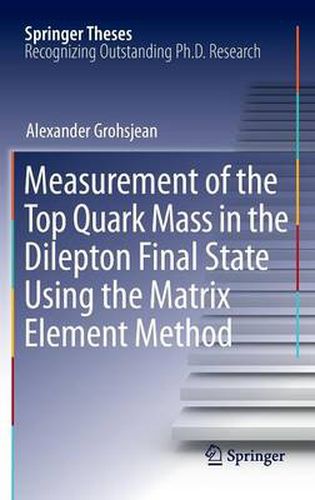Readings Newsletter
Become a Readings Member to make your shopping experience even easier.
Sign in or sign up for free!
You’re not far away from qualifying for FREE standard shipping within Australia
You’ve qualified for FREE standard shipping within Australia
The cart is loading…






This title is printed to order. This book may have been self-published. If so, we cannot guarantee the quality of the content. In the main most books will have gone through the editing process however some may not. We therefore suggest that you be aware of this before ordering this book. If in doubt check either the author or publisher’s details as we are unable to accept any returns unless they are faulty. Please contact us if you have any questions.
The main pacemakers of scienti?c research are curiosity, ingenuity, and a pinch of persistence. Equipped with these characteristics a young researcher will be s- cessful in pushing scienti?c discoveries. And there is still a lot to discover and to understand. In the course of understanding the origin and structure of matter it is now known that all matter is made up of six types of quarks. Each of these carry a different mass. But neither are the particular mass values understood nor is it known why elementary particles carry mass at all. One could perhaps accept some small generic mass value for every quark, but nature has decided differently. Two quarks are extremely light, three more have a somewhat typical mass value, but one quark is extremely massive. It is the top quark, the heaviest quark and even the heaviest elementary particle that we know, carrying a mass as large as the mass of three iron nuclei. Even though there exists no explanation of why different particle types carry certain masses, the internal consistency of the currently best theory-the standard model of particle physics-yields a relation between the masses of the top quark, the so-called W boson, and the yet unobserved Higgs particle. Therefore, when one assumes validity of the model, it is even possible to take precise measurements of the top quark mass to predict the mass of the Higgs (and potentially other yet unobserved) particles.
$9.00 standard shipping within Australia
FREE standard shipping within Australia for orders over $100.00
Express & International shipping calculated at checkout
Stock availability can be subject to change without notice. We recommend calling the shop or contacting our online team to check availability of low stock items. Please see our Shopping Online page for more details.
This title is printed to order. This book may have been self-published. If so, we cannot guarantee the quality of the content. In the main most books will have gone through the editing process however some may not. We therefore suggest that you be aware of this before ordering this book. If in doubt check either the author or publisher’s details as we are unable to accept any returns unless they are faulty. Please contact us if you have any questions.
The main pacemakers of scienti?c research are curiosity, ingenuity, and a pinch of persistence. Equipped with these characteristics a young researcher will be s- cessful in pushing scienti?c discoveries. And there is still a lot to discover and to understand. In the course of understanding the origin and structure of matter it is now known that all matter is made up of six types of quarks. Each of these carry a different mass. But neither are the particular mass values understood nor is it known why elementary particles carry mass at all. One could perhaps accept some small generic mass value for every quark, but nature has decided differently. Two quarks are extremely light, three more have a somewhat typical mass value, but one quark is extremely massive. It is the top quark, the heaviest quark and even the heaviest elementary particle that we know, carrying a mass as large as the mass of three iron nuclei. Even though there exists no explanation of why different particle types carry certain masses, the internal consistency of the currently best theory-the standard model of particle physics-yields a relation between the masses of the top quark, the so-called W boson, and the yet unobserved Higgs particle. Therefore, when one assumes validity of the model, it is even possible to take precise measurements of the top quark mass to predict the mass of the Higgs (and potentially other yet unobserved) particles.